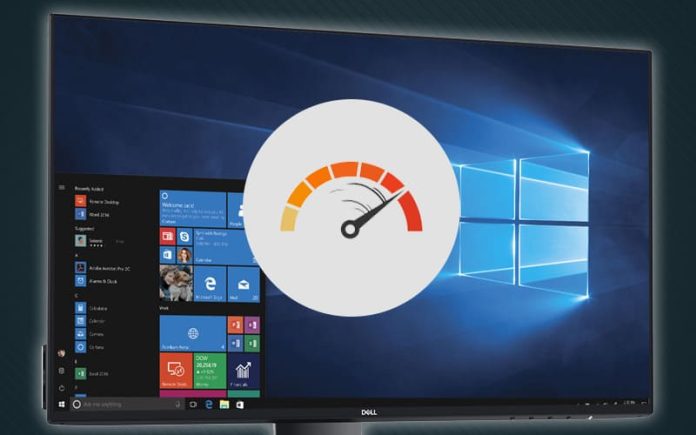Did you know that overclocking a display is a pretty straightforward process? Gaming with a high refresh rate is fantastic. Overclocking might assist you somewhat raise the refresh rate if your display isn’t capable of a high one. The display model you use, though, will have a significant impact. It’s fantastic to have a fast frame rate. Your games play more responsively and smoothly as a result. More crucially, possessing a refresh rate of 120Hz or 144Hz gives you a strategic advantage in competitive games like Counter-Strike; With a 60Hz monitor, you won’t be able to attain the higher frame rates required to participate. You may overclock monitor refresh rate after reading this article. So let’s begin.
A display’s refresh rate may be overclocked on both dedicated and integrated GPUs. But to adjust the refresh rate configuration, you need specific tools.
Refresh Rate: What Is It
Simply defined, a 60Hz display means that the image on the screen will refresh 60 times per second. Similar to this, an appearance on a show with a refresh rate of 144 Hz will restore 144 times per second, and one with a refresh rate of 75 Hz will refresh 75 times per second.
In particular, the smoother and more immediate everything feels, which might have a significant impact if you’re a gamer. This is true regardless of what refresh rate your monitor has. Things could load more rapidly on your screen if your refresh rate is greater.
How to overclock monitor refresh rate:
Here we demonstrate a third-party tool for monitor overclocking as well as software from AMD, NVIDIA, and Intel. Let’s now check each of them individually.
The Custom Resolution Utility can let you adjust your display’s refresh rate for AMD and NVIDIA GPUs.
However, it might not work with all Intel graphics.
Implementing Custom Resolution Utility
The tool CRU is accessible to practically all Windows users. However, the earlier Windows Vista versions are not supported by this software.
Let’s concentrate on the procedures for increasing display refresh rate right now:
Open the.exe CRU application from the zip file once the utility has been installed.
Check if the active monitor is now selected in the drop-down menu.
The Add button is located under Standard Resolutions.
Select the resolution of your display when the dialogue box appears. Here, you can see the 1920 x 1080 resolution on your display.
Next, provide a refresh rate that is five times higher than the highest supported refresh rate. Go to Settings > System > Display > Advanced Display > Display Adapter Properties > Monitor > Screen refresh rate to get the maximum refresh rate.
Visit Standard Resolutions once more. Make sure the slot you created is selected before clicking “Ok.”
Restart your computer at this point.
The display adapter properties are the next place to go. The Screen refresh rate drop-down should be expanded under Monitor.
After that, you’ll see that a new refresh rate has been applied. Select this now, then click Apply.
Your monitor’s screen briefly turns dark if the refresh rate is compatible. Then, the system prompts you to decide whether to maintain the modifications. Select Keep Changes and then press Ok.
An error message will appear if your screen is incompatible with your monitor. Wait a few seconds to get the GPU back to it’s previous refresh rate.
Repetition of the operation is necessary, but keep your refresh rate below the first set this time.
Up to the point where the display no longer accepts the refresh rate, repeat the same procedures. Your GPU can only overclock the display to that extent.
AMD’s control system
If you have one, try overclocking through the AMD graphics card’s built-in software. To achieve it, follow these steps:
Access AMD Catalyst Control Center or Software by right-clicking on the desktop, depending on what is accessible on your System.
Select Desktop Properties from the Desktop Management menu.
Go to the right pane and choose Refresh Rate. Enter a number here that is one hertz higher than the highest refresh rate your display can handle.
For this new configuration to be added, click Save.
Select the newly added refresh rate by going to the display adapter properties in the Control Panel. You might need to reset your device if it doesn’t appear.
Repeat the procedure until your monitor can no longer handle the refresh rate.
Control Panel for NVIDIA
The control panel of an NVIDIA graphics card allows you to adjust any GPU configuration.
To modify the refresh rate of your monitor in the NVIDIA Control Panel, follow these procedures for the time being:
Choose NVIDIA Control Panel by performing a right-click on the desktop.
Go to Change Resolution under Display.
Tap the Customize button after that.
Now, be careful to check the box for Enable resolutions not supported by the display.
After that, select Create Custom Resolution and agree to the terms.
The refresh rate you like may be selected under Display mode. We advise utilizing a hertz that is one higher than the maximum supported by your display.
Next, select the Test button.
There will be a brief blackout on your monitor. It recommends holding the modification if it chooses in favor of the resolution. Click Yes to continue.
Go to the Change Resolution area at this time. Select the recently updated refresh rate, and then click Apply.
Continue this procedure unless you discover the desired refresh rate your GUI will handle.
Last but not least, you may use third-party testing tools to verify that the refresh rate you specified is indeed being used.
Wrapping up
Just like overclocking your CPU, overclocking your monitor also brings multiple risks. While it should be safe enough for you to play around with overclocking your monitor, there is a slight chance that it could quite literally blow up.
This can harm you, but your monitor will be practically useless as you would have fried everything within it, perhaps including the display. You should also remember that overclocking at different resolutions can make a difference. For example, an overclock might work at 720p but not when it comes to 1080p.
Experiencing difficulties with your Device, check out our “How To” page on how to resolve some of these issues.














